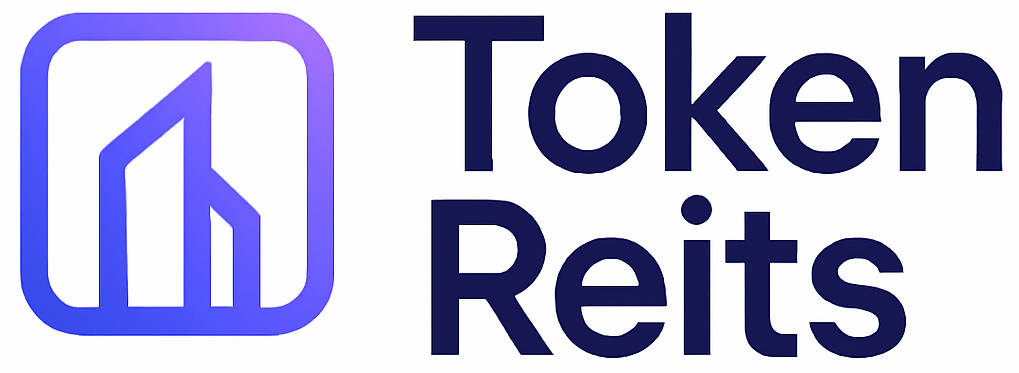
Fractional property ownership on-chain is not just a buzzword in 2025 – it is a fundamental shift in how real estate is bought, sold, and managed globally. By leveraging blockchain technology, investors can now access institutional-grade property markets with unprecedented ease and transparency. No longer confined to traditional barriers such as high capital requirements or geographic limitations, individuals around the world are participating in real estate tokenization and reshaping the investment landscape.

From Whole Properties to Digital Fractions: The Mechanics of On-Chain Ownership
At its core, real estate tokenization involves converting the economic rights of a physical asset into digital tokens recorded on a blockchain. Each token represents a fractional ownership stake in the underlying property – whether it’s an apartment building in New York or an office tower in Dubai. These tokens grant holders direct exposure to rental income, appreciation, and even certain governance rights.
The process begins with the legal structuring of an asset so that it can be divided into hundreds or thousands of digital shares. Smart contracts – self-executing code on the blockchain – automate critical functions such as income distribution, compliance checks, and voting mechanics. This not only reduces administrative overhead but also ensures greater transparency and security for all parties involved.
For a step-by-step breakdown of how this works in practice, see our in-depth guide to fractional real estate ownership with blockchain tokens.
The 2025 Market: Explosive Growth and Leading Platforms
The adoption curve for blockchain property investment has steepened dramatically. As of September 2025, more than $7 billion worth of global real estate has been tokenized, involving over 1.2 million active investors. Market analysts forecast that this figure could balloon to $4 trillion by 2035 as regulatory clarity improves and institutional players enter the space.
RealT, for example, has pioneered U. S. -based property tokenization with over 700 properties valued at more than $130 million now fractionalized on-chain. Investors receive daily rental payouts in stablecoins and can trade their tokens on secondary markets – introducing liquidity never before seen in real estate investing.
Propy bridges traditional transactions with blockchain by integrating legal compliance directly into smart contracts. Meanwhile, Lofty AI, built on Algorand’s blockchain, lets users buy into income-generating properties for as little as $50 per share while leveraging AI-driven analytics to optimize returns.
Why Investors Are Turning to Tokenized Real Estate
The allure of programmable real estate assets is multifaceted:
- Democratization: Minimum investments have dropped from $1 million and to under $100-$1,000 on many platforms.
- Global Access: Anyone with an internet connection can participate – no matter their location or background.
- Enhanced Liquidity: Unlike traditional sales that take months, tokenized assets can trade within hours on secondary markets.
- Reduced Costs: Smart contracts automate escrow and distribution at costs often below 1% per transaction.
- 24/7 Markets: Blockchain platforms never close – enabling round-the-clock trading worldwide.
- Programmability: Tokens embed rights (income sharing), restrictions (resale limits), and automated governance features impossible with legacy structures.
This new paradigm is not without risks: regulatory frameworks are still evolving rapidly across jurisdictions; technology carries inherent complexities; standards are still being established industry-wide. Yet the advantages are too compelling for both retail investors seeking diversification and institutions looking for efficiency gains.
The Regulatory Landscape: Global Adaptation Accelerates
A pivotal development came in May 2025 when Dubai’s Land Department launched its government-approved platform for real estate tokenization – instantly onboarding $399 million worth of properties within its first month. This move signals growing acceptance among regulators who recognize both the economic potential and challenges associated with blockchain-based property investment.
Nations across Europe, Asia-Pacific, and North America are following suit by updating securities laws to accommodate digital assets while mandating robust Know Your Customer (KYC) protocols and smart contract audits for investor protection. For those interested in how these changes impact practical investing steps, our $1 million property example guide offers detailed insights into compliance workflows now standard across leading platforms.
As regulatory guardrails solidify, institutional capital is beginning to flow into the sector. Family offices, REITs, and even pension funds are experimenting with direct blockchain property investment or partnering with tokenization platforms to broaden their portfolios. The result is a virtuous cycle: increased legitimacy attracts more capital, which in turn drives greater innovation and standardization across the industry.
However, it remains essential for investors to approach tokenized real estate with a research-driven mindset. Due diligence should extend beyond property fundamentals to include scrutiny of platform governance, smart contract security, and legal structuring. As always, diversification across geographies and asset types can help mitigate emerging risks unique to programmable real estate assets.
Practical Considerations: What Investors Need to Know
Before acquiring fractional property tokens, prospective investors should consider several key factors:
- Platform Credibility: Review the track record of tokenization platforms, established players like RealT, Propy, and Lofty AI have demonstrated reliability through transparent operations and consistent income distribution.
- Legal Structure: Understand whether tokens represent equity in a legal entity holding the property or direct title claims. Jurisdictional differences can impact rights and tax treatment.
- Liquidity Mechanisms: Not all tokens are equally liquid; some may only trade on specific secondary markets or have lock-up periods. Assess exit strategies before investing.
- Smart Contract Transparency: Reputable platforms publish audited smart contracts, review these for clarity on income flows, voting rights, and compliance automation.
The most successful investors in this space treat it as a hybrid of traditional real estate diligence and digital asset evaluation. For those new to the sector, our step-by-step investment guide provides actionable frameworks for assessing opportunities in 2025’s rapidly evolving market.
Looking Ahead: The Next Cycle of Ownership
The momentum behind fractional property ownership on-chain is unmistakable. With over $7 billion in assets now digitized and more than one million global participants, the foundation for a new era of real estate investment is firmly laid. As token standards mature and cross-border regulations harmonize further, expect even broader participation from institutional allocators and retail investors alike.
This shift will likely accelerate innovation around programmable assets, from dynamic rental agreements to automated refinancing protocols embedded directly into property tokens. The potential for composability between DeFi (decentralized finance) tools and physical asset ownership could unlock entirely new models of value creation within the sector.
The rise of fractional property ownership on-chain represents not just an incremental improvement but a fundamental reimagining of how we access one of humanity’s oldest asset classes. As always in emerging markets, those who combine rigorous research with early adoption stand to benefit most from this technological transformation.




